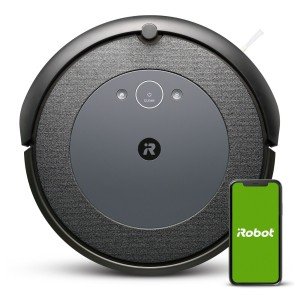It's The Myths And Facts Behind Robotic Hoovers
Robotic Hoovers: Revolutionizing Home Cleaning
In the busy world we reside in, where time is of the essence, family tasks often take a backseat. Among the most significant developments in domestic innovation are robotic hoovers, or robotic vacuum. These intelligent machines have changed the way individuals approach cleaning their homes, enabling for performance and convenience that traditional vacuuming can not match. This post dives into the features, benefits, and future of robotic hoovers, as well as addressing common queries about their functionality and maintenance.
What Are Robotic Hoovers?
Robotic hoovers are automated vacuum created to navigate through rooms and tidy floorings without human intervention. redirected here use various technologies, including sensors, electronic cameras, and synthetic intelligence, to find dirt and navigate challenges, making them an important addition to modern households.
Key Features of Robotic Hoovers
Smart Navigation: Most robotic vacuums are equipped with sophisticated sensory technology that allows them to map and navigate areas effectively. This consists of:
- Lidar Sensors: To produce a map of the home.
- Infrared Sensors: To prevent barriers and drops (like stairs).
- Cliff Sensors: Prevents the system from falling off edges.
Automated Scheduling: Many robotic hoovers can be programmed to clean at particular times, maximizing convenience for users.
Self-Charging: Most models go back to their docking stations when their battery is low, guaranteeing they are constantly charged and prepared to tidy.
App Connectivity: Modern robotic vacuums typically feature apps that enable users to control their gadgets from another location, set schedules, and even see cleaning maps.
Several Cleaning Modes: Options such as spot cleaning, edge cleaning, and scheduled cleaning enable customized cleaning routines based upon the family requires.
Benefits of Robotic Hoovers
- Time-Saving: Robotic hoovers can run individually, freeing up valuable time for property owners to concentrate on other jobs.
- Consistency: They offer consistent cleaning efficiency and keep floor cleanliness without the disparity that sometimes comes with manual vacuuming.
- Ease of access: With their compact design, robotic hoovers can easily reach under furniture and into tight areas where standard vacuums battle.
- Maintenance of Various Floor Types: Many robotic vacuum can adjust to different surface areas, consisting of carpets, hardwood, tile, and more.
- Combination with Smart Home Systems: They can be connected to smart home devices, permitting users to incorporate them into their home automation systems.
Comparison of Popular Robotic Hoovers
Here's a short comparison of some popular designs in the market:
Model
Smart Navigation
App Connectivity
Battery Life
Price Range
iRobot Roomba 675
Yes
Yes
90 minutes
₤ 250 – ₤ 300
Neato Botvac D7
Yes
Yes
120 minutes
₤ 600 – ₤ 700
Eufy RoboVac 11S
Yes
Limited
100 minutes
₤ 200 – ₤ 250
Roborock S6
Yes
Yes
150 minutes
₤ 500 – ₤ 600
Shark ION Robot
Yes
Yes
120 minutes
₤ 250 – ₤ 350
Upkeep and Care for Robotic Hoovers
Regardless of their automated functions, robotic hoovers require regular maintenance to ensure their optimal performance. Here are some ideas for preserving a robotic vacuum:
- Empty the Dustbin Frequently: Regular emptying helps preserve suction power.
- Tidy the Brushes: Hair and debris can block brushes; regular cleaning prevents this.
- Examine the Filters: Dirty filters can hinder performance; they need to be cleaned up or replaced as defined by the manufacturer.
- Examine Wheels and Sensors: Ensuring that the wheels are without barriers and sensors are tidy will boost navigation and efficiency.
- Update the Firmware: Keeping the robotic vacuum's software up-to-date can resolve bugs and improve functionality.
Future of Robotic Hoovers
As technology continues to develop, the potential for advancements in robotic vacuums is vast. Innovations on the horizon might include:
- Improved AI Capabilities: Enhanced finding out algorithms may make it possible for robotic hoovers to better understand homes and cleaning requirements.
- Combination with More Smart Home Devices: Future models might become a lot more integrated with home automation systems, boosting functionality.
- Advanced Cleaning Features: Innovations like mopping capabilities and much deeper carpet cleaning performance might broaden their energy.
- Sustainability Features: Future designs might include eco-friendly innovations, such as solar charging or recyclable products.
Regularly Asked Questions (FAQs)
How much do robotic hoovers typically cost?
- Prices for robotic hoovers differ considerably depending on functions, but normally range from ₤ 200 to ₤ 800.
How loud are robotic hoovers?
- Most robotic vacuums run at a sound level in between 50 to 70 decibels, which is quieter than conventional vacuums.
Can robotic vacuums handle pet hair?
- Yes, numerous robotic hoovers are designed specifically with powerful suction and brushes to handle pet hair efficiently.
Do robotic vacuums work on carpets?
- Absolutely. Most robotic vacuums can clean different kinds of surfaces consisting of carpets, wood, and tiles.
Do I need to configure my robotic vacuum?
- While you can set schedules and preferences through an app, numerous designs can likewise operate on demand or instantly once charged.
In conclusion, robotic hoovers represent an impressive leap in family cleaning technology, offering impressive benefit and efficiency that appeal to contemporary property owners. As innovation continues to advance, these devices assure even better cleaning abilities, even more boosting home health and upkeep. For anyone aiming to simplify their cleaning regimens, investing in a robotic hoover can be a tremendously gratifying choice.
